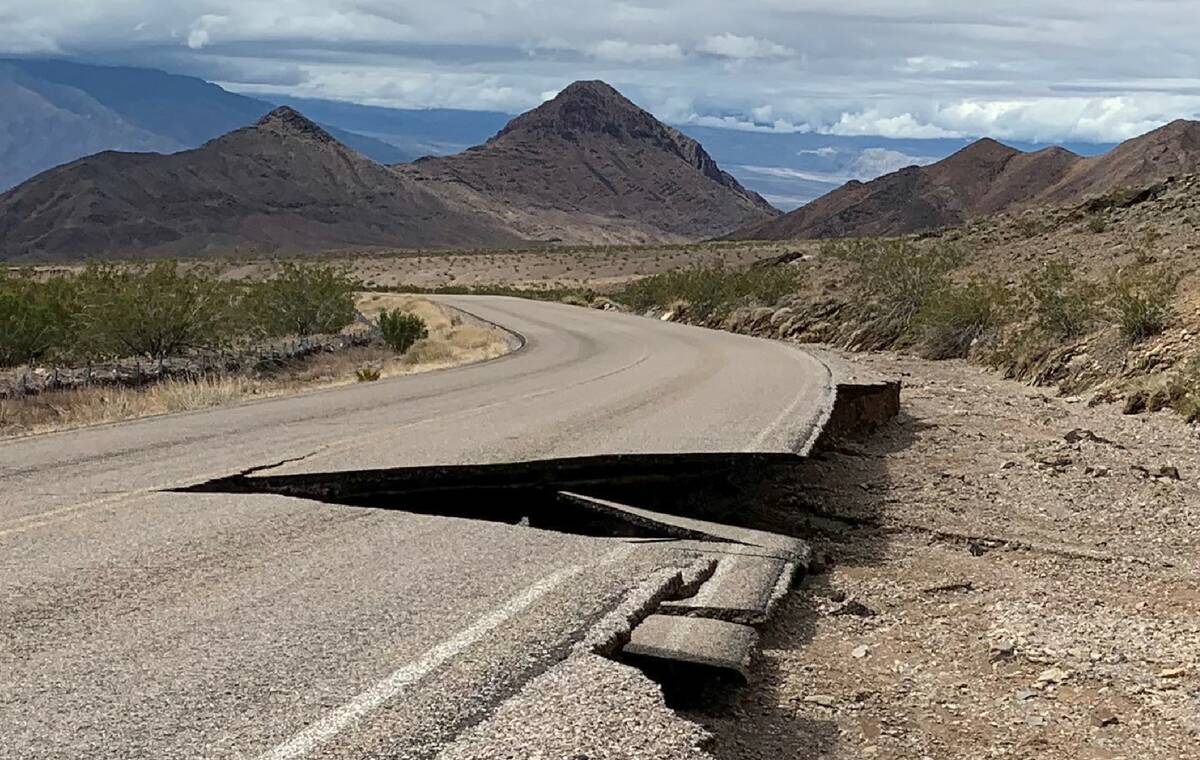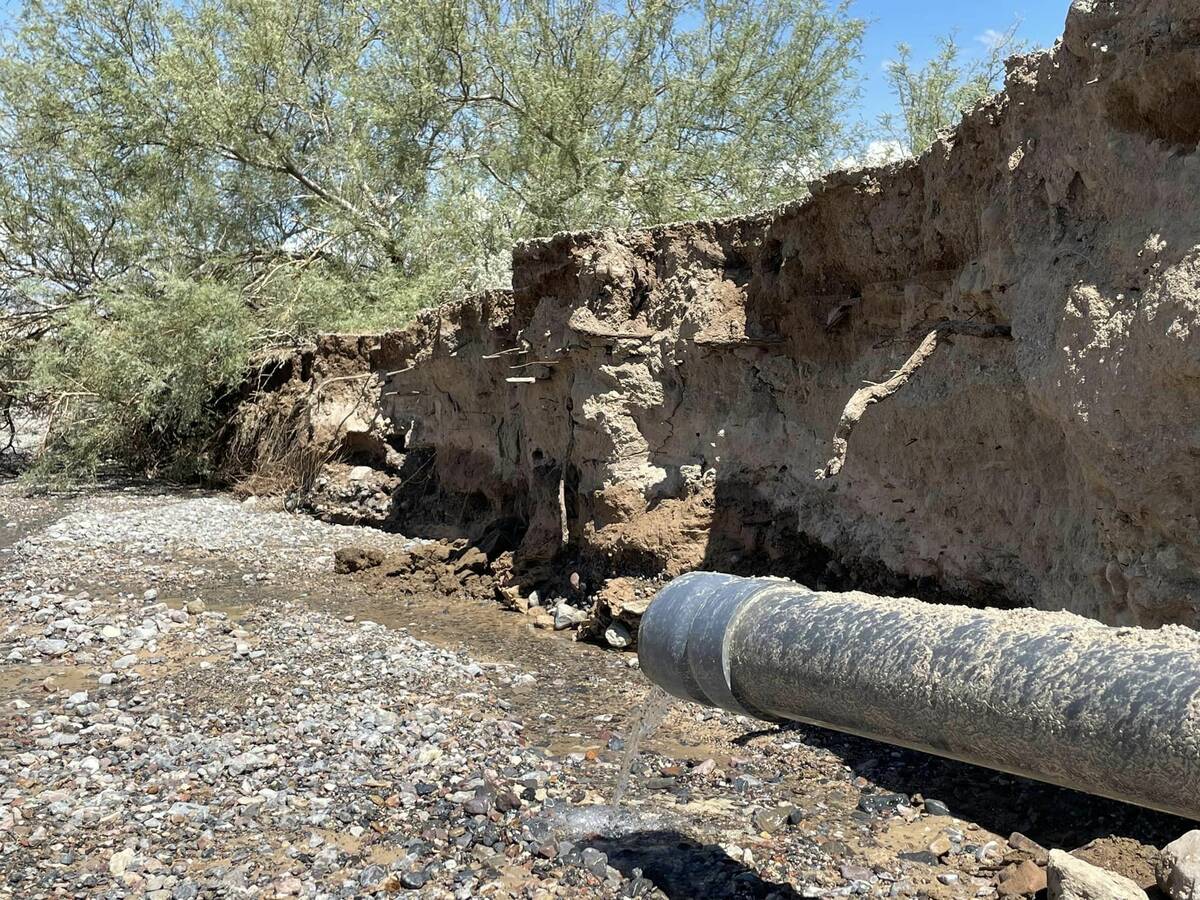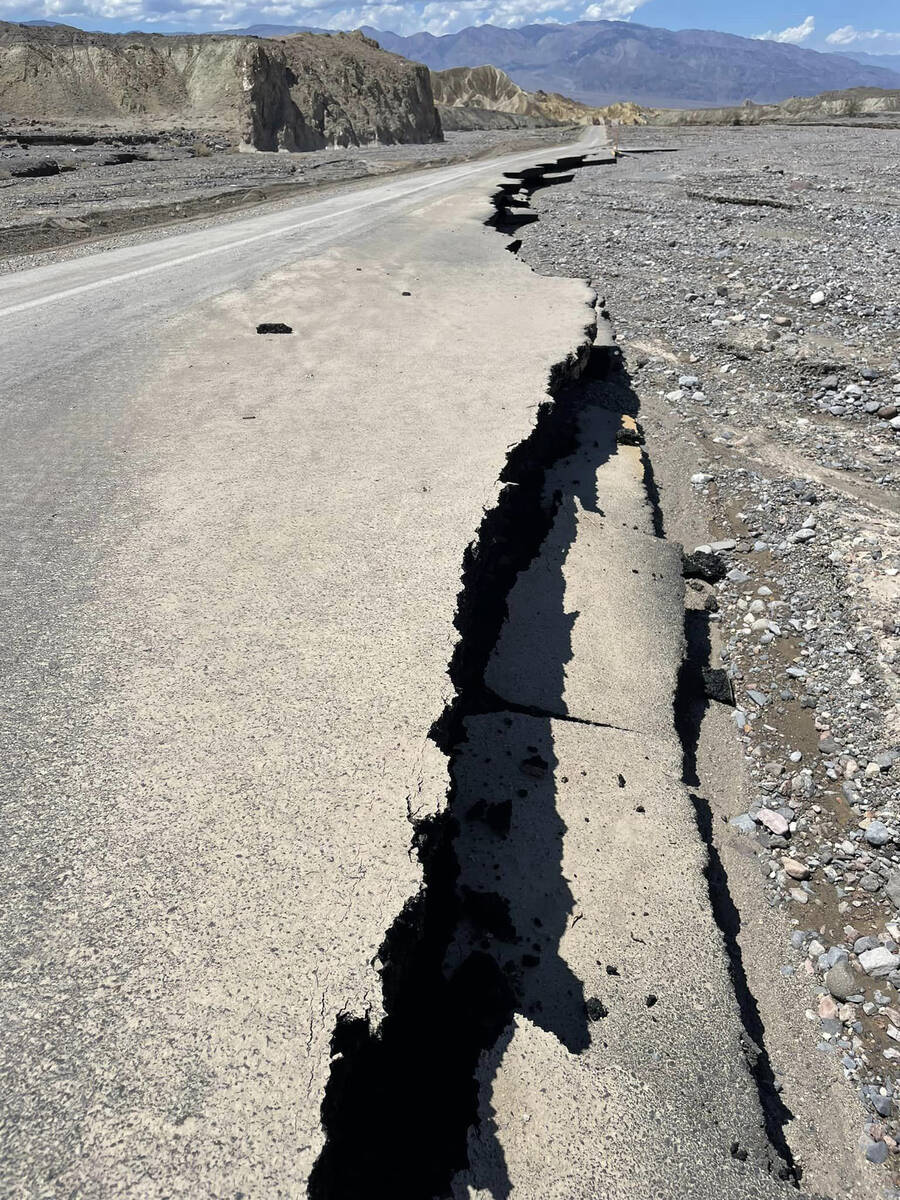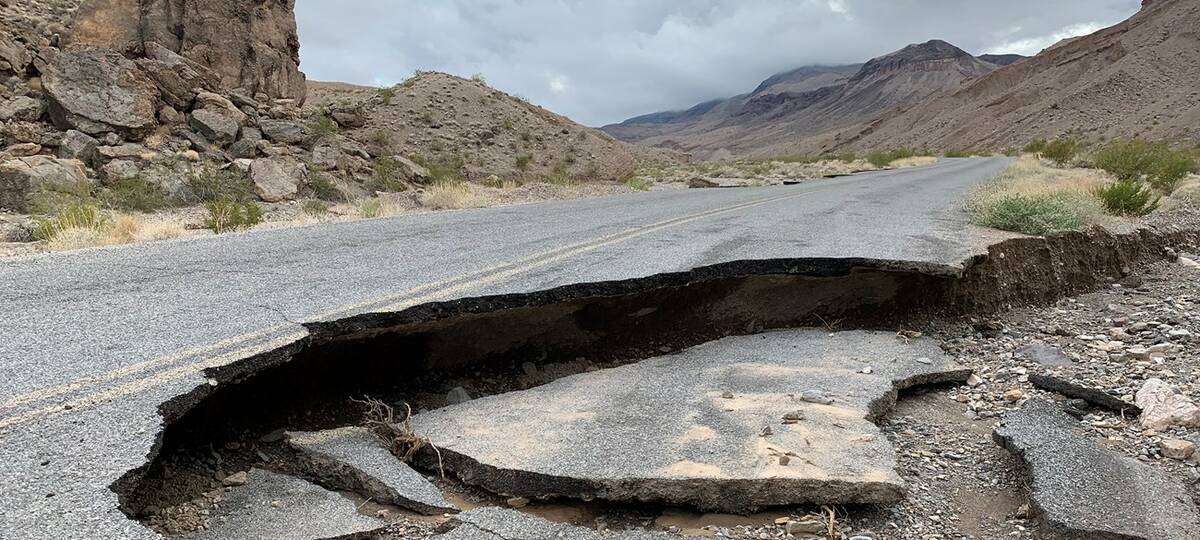‘Do not enter the park’: No timeline for Death Valley reopening
Five days after its rainiest recorded day ever, Death Valley National Park was still closed but about 400 people trapped there have left after a lane on a California highway was cleared of floodwater debris, a park spokesperson said.
The California Department of Transportation and the National Park Service “were able to grade an administrative lane on State Route 190 from Stovepipe Wells to Death Valley Junction, so people who were sheltering in place in the park were able to leave,” Park ranger Elyscia Letterman stated in an email Friday.
“There is no estimate as to when the park/roads will reopen,” Letterman wrote.
“We did not measure any precipitation at Furnace Creek later in the week and there was no further damage.”
The park’s website on Friday warned: “Do not enter the park.”
“Many roads are covered with significant debris flows and have undercutting and shoulder loss due to recent flash flooding,” it read. “Emergency services probably won’t be able to respond.”
What was left of Hurricane Hilary sent heavy rains last weekend extending from the coast of Southern California to southern and central Nevada and triggered flooding throughout Death Valley park, damaging its paved and unpaved roads.
On Sunday, the park received a record daily rainfall of 2.2 inches, more than the previous record of 1.7 inches from Aug. 5, 2022, and the average of 2.15 inches it gets in an entire year, according to park officials.
Water runoff pushed dirt and rock over roads, and cracked and eroded asphalt, making many routes within the park impassable and unsafe to use, the officials reported.
“Flash floods form when rainfall exceeds the land’s ability to absorb water” and even small amounts of rainfall “can cause dangerous flash floods” in the park, officials said.
On Monday, about 400 residents, visitors, park and business employees were prevented from exiting the park and had to shelter in place at Furnace Creek, Stovepipe Wells and Panamint Springs.
After about 24 hours, the park service and Caltrans road crews had opened the lane on Route 190, providing an exit for them.
“The park will likely reopen in stages,” park officials said in a Facebook post. “It may be weeks before Furnace Creek and Stovepipe Wells open. Secondary roads in the park may take months to open.”
As of Thursday afternoon, park officials had assessed the status of only about 34 acres of the 3.4-million-acre national park, they wrote.
“These assessments are to give us a good sense on what happened to roads, utilities, signs, trails, as well as natural and cultural resources, which we will use to guide recovery work and efforts over the upcoming weeks and months,” they stated.
Last August and September the park experienced several heavy rain days resulting in major damage to roads that took weeks and millions to repair.
Contact Jeff Burbank at jburbank@reviewjournal.com or 702-383-0382. Follow him @JeffBurbank2 on Twitter.


































